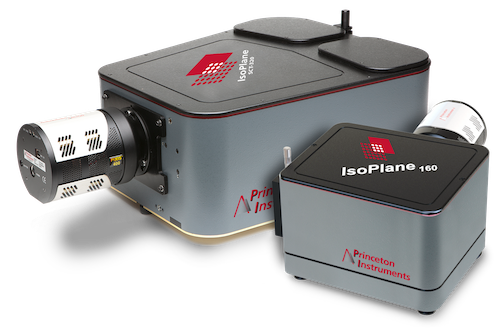Dirk Englund, Gabriele Grosso
arXiv
Bright high-purity quantum emitters in aluminium nitride integrated photonics
Introduction
Isoplane spectrographs are perfectly suited to meet the high demands of sensitive photoluminescence measurements of quantum materials down to the single molecule level. They are often combined with microscopy and cryogenic capabilities to characterize the emission properties and interactions with the environment.
Optical and photonic devices are increasingly miniaturized and used in photonic integrated circuits. that are compatible with wafer scale Si manufacturing techniques. Obvious advantages are scale and lower cost; however, many challenges are still to be solved and are actively being tackled by researchers around the world. For example, integration of quantum measurement protocols for communication, computation, information processing and quantum-enhanced sensing require active single photon quantum light sources, where the emitters are embedded in a solid-state material. Some of the highest performance candidates for single photon sources, such as color centers in diamond work well on small scale measurements in the lab, but seem difficult to integrate in large, wafer scale manufacturing processes.
Researchers around Dirk Englund from MIT and Gabriele Gross at the City University of New York are exploring new host materials for quantum emitters that can be applied on wafer scale, involving spectroscopic measurements for their characterization. The research published recently describes quantum emitters formed by implanting Helium ions in aluminum nitride and annealing at high temperatures of 1000°C.

Optical measurements are used to characterize the photo-luminescence emission of the investigated devices. They characterize the lifetime and photon statistics of the emitters to show that they have the signature of a single photon source. For spectroscopic measurements, the group uses an Isoplane 320 spectrograph to measure the photoluminescence spectra at different temperatures from room temperature down to cryogenic temperatures at 5K. As the emitters are embedded in a solid-state crystal and the interactions with the crystal lattice will be important for the optical properties and performance of an optical device. The temperature dependence of the PL spectra allows to characterize the interactions of the lattice with the emitters as well as the influence of the quantum mechanical coherence of the optical emission (dephasing).

